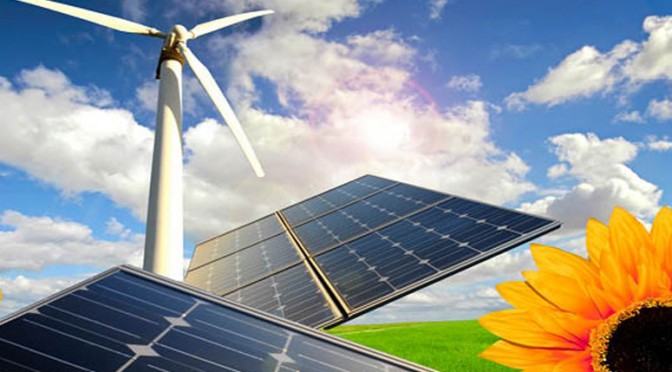Renewable energy today employs twice as many people as the oil industry (oil and gas). The International Renewable Energy Agency estimates that photovoltaics, wind energy, concentrated solar power and other renewable energy employ more than eleven million people. The energy transition is a revolution. The wind power sector expects to install more electric power in the next five years than the one installed by nuclear power in the last 40 years. And the solar photovoltaic, too.
Wind energy, which already serves 6% of the world’s electricity demand, is the main protagonist of this revolution. He is the protagonist on land, where he already produces electricity in many regions of the planet at a cost that competes without aid and wins gas. And protagonist in the seas, where not only is it a reality (23,000 megawatts installed offshore wind farm), but it is about to open the biggest window of energy opportunity of the century: the one that offers the most powerful and constant winds, the most away, those who only blow very far from the coast.
There the wind turbines cannot be cemented (given the depth of the water), but they can operate on floating platforms. And the floating wind farm is already here: the first installation was inaugurated in 2017; and, although its cost per megawatt is still high, the big economies – USA, China, India, the EU – have already turned their gaze to that mine, because their costs are falling at a strong pace and the resource is formidable . According to the International Energy Agency, floating wind turbines can supply several times the demand for electricity from several key markets, “including Europe, USA. and Japan. “
According to the European employers of the photovoltaic solar sector, between 2019 and 2023, the world will add to the global photovoltaic park (which already has 600 gigawatts of power) between 800 and 1,300 gigawatts (GW) more: a growth of between + 60% and + 160%. To give us an idea of ??the magnitude, after 60 years of history, nuclear today has 396 GW of generation power worldwide. Among the ten countries with the most photovoltaic power connected, there are four continents: USA, Korea, Australia or Germany.
In 2018, photovoltaic installed more power than any other electricity generation technology: 100 GW (compared to 54 GW of wind or 6 net of nuclear). In spite of this, the contribution of the photovoltaic solar to the global mix today represents only 2.6% of the demand for electricity in the world, compared to 38% of coal, 23% of gas, 20% of hydraulics and biomass, 10% of nuclear … The energy revolution is just emerging.
Between 2010 and 2017, the price of solar modules has fallen by 80%. The Spanish Photovoltaic Union estimates that between 2009 and 2019, costs have been reduced by 95%
The plummeting has been due mainly to R&D, which has reduced manufacturing, distribution and installation costs, while increasing product quality, efficiency and profitability. It is already cheaper to produce confotovoltaic electricity and wind energy than to do it in a large natural gas plant in many regions of the planet.
It is only the beginning: the Global Wind Energy Council has just published a report that analyzes the “perspectives of the global offshore wind power market”.
The most conservative of the assumptions handled estimates that in 10 years 165,000 megawatts of power will be installed at sea. Offshore wind power is postulated as base, backup energy, because its production is very stable and constant, so it is called to replace coal, gas and nuclear, the sources that have traditionally backed electrical systems as is the solar thermal, the third major protagonist of the energy revolution that comes to us. The concentrating solar thermal power plants have huge tanks of thermal salts that store the heat of the day to release it at night and generate the electricity that we need then. In Spain there are 18 concentrated solar power plants with salt tanks in operation. Some are capable of storing up to 15 hours of electricity. They have been operating for 6 to 10 years (the last one was opened in 2013). Its technology is more than proven. In May they beat their last brand. The solar thermal plants was constantly generating electricity for seven days: day and night. At all hours: 24 of 24. The sun’s energy can be stored. It is no longer future or future. Is present.


